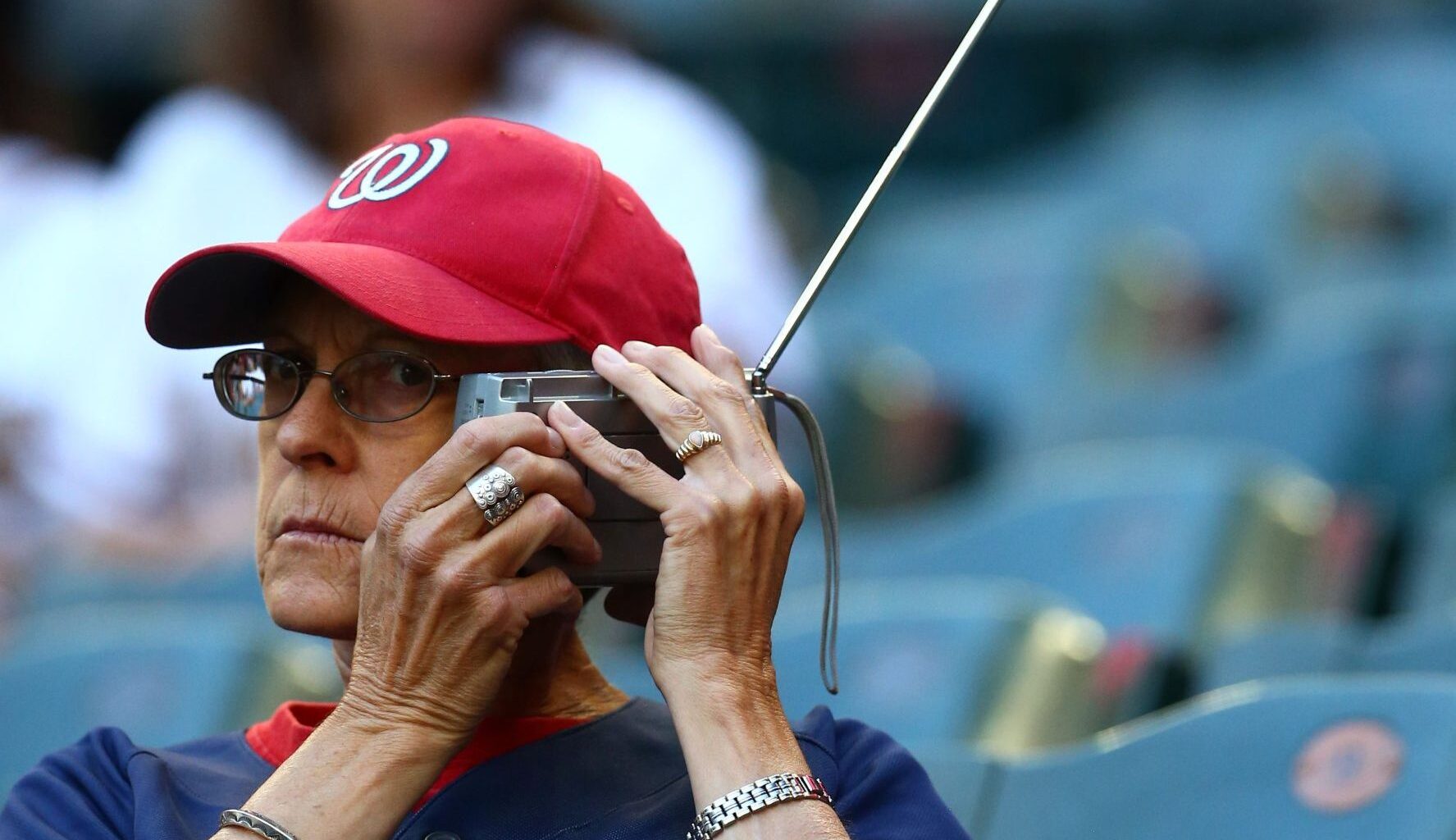Welcome back to “On the Air,” in which Sports Media Watch Podcast co-host Armand Broady will offer in-depth breakdowns of broadcasters, on-air performance and career journeys, plus chronicle broader trends in the industry.
In 2016, baseball writer Jayson Stark wrote an ESPN.com column centered on the legendary career of baseball broadcaster Vin Scully. The piece is an assemblage of anecdotes from numerous baseball figures who share details of personal encounters with the revered announcer. One of the most memorable came from Hall-of-Fame broadcaster Bob Costas, who recalled the moment when music icon Ray Charles asked Costas to connect him with Scully. When a shocked Costas asked why, Charles responded, “Well, I love baseball. And you have to understand, Bob, the pictures mean nothing to me. It’s all the sound. And Vin Scully’s broadcasts are almost musical.”
Years later, that sound still resonates, creating pictures in the minds of listeners sitting in their cars, in their living rooms, or on their smartphones and laptops. Despite sports media’s twists and turns, radio remains, creating an intimate relationship between a radio announcer and the listening audience.
Kevin Harlan is passionate about that relationship. While millions know him for his TV play-by-play work on CBS and TNT, for the last 16 years, Harlan has been the lead voice of the NFL on Westwood One Radio.
“When I was a kid, I fell asleep listening to iconic radio voices — Jack Buck, Lindsay Nelson, Jim Simpson, Joe Tait and Jim Durham,” Harlan said during an interview with the Sports Media Watch Podcast. “I romanticized these voices and their perch in a stadium and just the skill at creating such a vivid impression in my mind. I began to listen to the way they painted a picture and I thought that’s what I want to do.”
On radio, Harlan uses his sonorous voice like an orchestra conductor, weaving in verbs, nouns, adjectives and prepositional phrases. His distinctive baritone cuts through with every word, causing fans to lean in for his spirited delivery.
Listeners have become familiar with his vivid descriptions — a “high-arching spiral,” a “two-handed twisting helmet-high catch” or a “long line drive to the far sideline.”
Harlan’s fervor for radio, as well as a few viral clips of his Westwood One play-by-play, demonstrate that the medium is far from irrelevant. Some of today’s most respected voices, like Kenny Albert, Ian Eagle, Jon Miller, Dave Pasch, Merrill Reese, Howie Rose and Dave Sims, still regularly call games on radio, either nationally or locally.
Sure, television is the more glamorous medium, with its stunning picture quality and attractive graphics, but radio is the playground of the mind. The best radio announcers take their brushes and palettes and fill in every blank for the listener. It’s a challenge Harlan heartily embraces.
“TV just kind of happened; radio is my first love,” Harlan said. “Radio, to me, is the purest form of broadcasting. It’s voice, it’s delivery, it’s resonance, it’s inflection, it’s the energy, it’s the word usage, it’s the descriptive details, it’s reporting skills. It’s all these things that every broadcaster — whether they’re doing news or sports — they’ve got to have.”
Four decades into his broadcasting career, Harlan, a three-time National Sportscaster of the Year, has become more than a top-tier announcer. His enthusiastic radio style has become a benchmark, providing a template for young hopefuls looking to reach the peak of the industry. If Harlan has anything to say about it, that new generation will fall in love with the medium like he did, using clever wordplay and vocal gymnastics to deliver calls that will go down in sports history.
Plus: Announcers who do it all
In television, the line between play-by-play announcer and analyst is well-defined. The play-by-play announcer provides the “who” and the “what.” The analyst breaks down the “how” and the “why.”
It is rare to find announcers who can ably shift from one role to the other. During a recent episode of the Sports Media Watch Podcast, broadcast legend and “The NFL Today” host James Brown recalled how he got his start at the network level, not as a host or play-by-play announcer, but as a basketball analyst.
“I wanted to make sure I could be well-rounded,” Brown said. “Verne Lundquist and others told me the same thing, ‘J.B., do as many different sports as you can to show your versatility. That should equate to longevity and some opportunity to do other things like news.’”
Brown, who was drafted by the Atlanta Hawks in 1973, started at CBS in the 1980s working alongside Lundquist and the late Frank Glieber. He also performed sideline reporting and play-by-play duties before eventually becoming the dean of NFL pregame show hosts.
Ahead of his acclaimed partnership with John Madden, Pat Summerall began as an NFL analyst on radio and television, working with play-by-play announcers Chris Schenkel, Ray Scott and Jack Buck.
After nearly 15 years as “Monday Night Football” play-by-play voice, Frank Gifford was moved over to the analyst seat in 1986 to make room for Al Michaels.
Tim Brant was a college football analyst for CBS and ABC, sharing the booth with legends like Jim Nantz and Keith Jackson. During his short stint at CBS (1987-90), he also served as NFL play-by-play announcer, often working with former NFL coach Hank Stram and Dan Jiggetts, and even roamed the NBA sidelines — as would fellow NFL analysts Cris Collinsworth and Phil Simms for NBC and Charles Davis for TNT.

